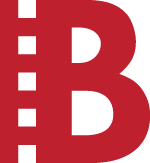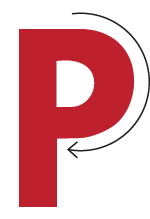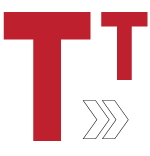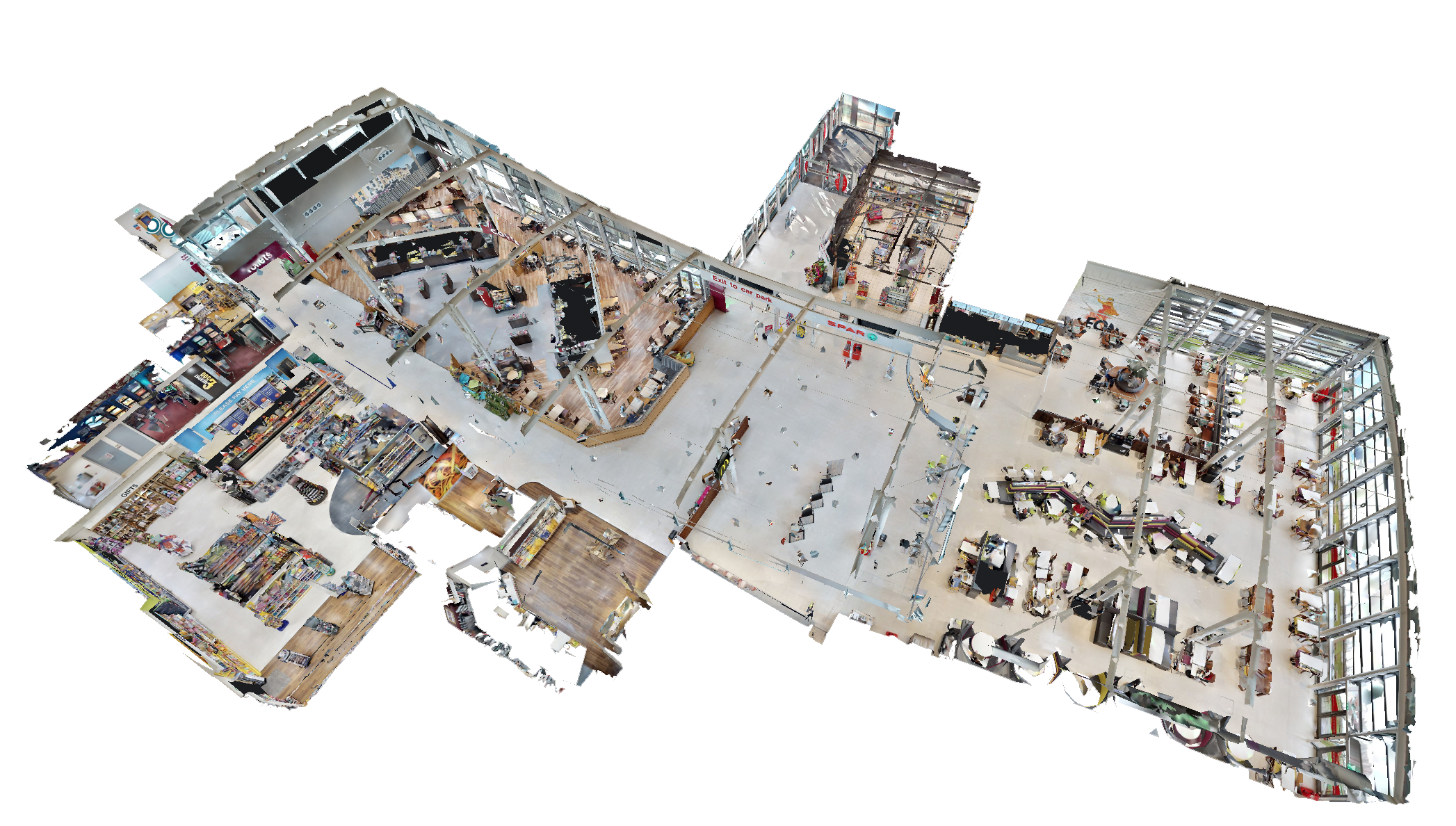How is Matterport different to 360° video?
Matterport is 360° video, but it's also much more. Matterport is about speed, interactivity, affordability and accuracy. A Matterport camera uses 9 lenses and infrared (to measure distances) to capture stunning 360° video that the viewer can explore AND which can be augmented with additional media such as video, images, PDFs and audio. Which means (if you take our studio as an example) people can understand the space we have, see projects we've used the space for and look at the equipment we offer. All from the comfort of their own computer.
Here's our 10 reasons why Matterport is different to 360° video and some examples of our own projects
- 3D Scanning and Modeling: Matterport uses 3D scanning technology to create immersive and realistic virtual tours. Instead of just stitching together panoramic photos, it creates a 3D model of the space, allowing viewers to move through the environment as if they were physically present.
- Dollhouse View: Matterport offers a "Dollhouse" view, which presents a 3D model of the entire space in a collapsed form, making it easy for viewers to understand the layout and structure of a property or location at a glance.
- Floor Plans: Matterport can automatically generate floor plans from the 3D scan, providing viewers with a clear understanding of the space's layout and dimensions.
- Measurement Tools: Matterport includes measurement tools that allow users to measure distances and dimensions within the virtual tour. This is particularly useful for real estate professionals and property buyers.
- Interactive Hotspots: Matterport allows users to add interactive hotspots within the virtual tour. These hotspots can contain additional information, images, videos, or links to external websites, enhancing the overall user experience.
- Virtual Reality (VR) Support: Matterport tours are compatible with virtual reality headsets, providing a truly immersive experience for viewers who own VR hardware.
- Customization: Matterport offers customization options, allowing users to tailor the look and feel of their virtual tours to match their branding or specific needs.
- Accessibility: Matterport tours are accessible across various devices and platforms, including desktop computers, smartphones, and tablets, making them widely accessible to a broad audience.
- Integration: Matterport can integrate with various platforms and services, such as real estate websites and property listing platforms, to help businesses and professionals showcase properties effectively.
- Analytics: Matterport provides analytics and engagement metrics, giving users insights into how their virtual tours are performing and how viewers are interacting with the content.
Check out some of our projects:
AR Media Studio
Wookey Hole
Mlily Furniture Show
AR Media's A to Z of video production terminology
Goobledegook… It's all very well using industry terminology between ourselves but we realise that sometimes we may use terms that our clients may not understand. So here's our A to Z of things you might hear us say when you commission us for a video project.
 |
Aspect Ratio: The proportional relationship between the width and height of a video frame. Modern videos tend to use 16:9, pre-2000s you might have used 4:3. (also included in the A to Z as its what the AR of AR Media stands for |
 |
B-roll: Additional footage used to support the main content of a video. It is often used to provide visual context or cover transitions. We often capture manufacturing processes, buildings, people at work for this. Bokeh: A favourite of cinematographers, bokeh is the blur effect seen predominantly on lights that are out-of-focus. |
 |
Colour Grading: The process of adjusting and enhancing the colours of a video during post-production to achieve a desired look or mood. The footage we capture in its raw format has a very flat/grey look, but this allows us to tweak the colours to make them as realistic as possible. |
 |
Depth of Field: The range of distance in a shot that appears in focus. A shallow depth of field has a narrow focal range, while a deep depth of field has a wider focal range. Filming an interview for example you would use a shallow depth of field to keep the subject in focus but the background intentionally blurry. |
 |
Exposure: The amount of light that reaches the camera's image sensor, determining the brightness or darkness of a video. A correctly exposed shot will display depths of black without blowing out any highlights such as clouds in the sky. |
 |
Frame Rate: The number of individual frames captured or displayed per second. Common frame rates include 24, 30, and 60 frames per second (fps). This has an effect on quality and also file size. |
 |
Grip: A member of the production crew responsible for setting up and maintaining equipment such as lighting fixtures, tripods, and camera rigs. We're a tight-knit team so every one of us gets involved in setup and breakdown. Gimbal: A device that holds the camera and allows us to turn in any direction freely and smoothly. |
 |
High Definition (HD): A video format with a higher resolution than standard definition, typically 720p or 1080p. But of course these days we record even higher in 4K. |
 |
ISO: The sensitivity of a camera's image sensor to light. A higher ISO allows for better low-light performance but may introduce more noise into the image. A low ISO makes for a finer picture but needs little movement in the frame. |
 |
Jump Cut: A jarring transition between two shots that are nearly identical, often used for stylistic effect or to compress time. J-cut: When the image of a scene is preceded by its sound or audio content. |
 |
Key Light: The primary light source used to illuminate the subject in a video. We'll often have a 3 light setup to balance the subject. |
 |
Lens: A must-have of every A to Z, the optical device that focuses light onto the camera's image sensor. Different lenses have various focal lengths and characteristics, affecting the perspective and field of view. Lavalier: A microphone that clips to the presenter's clothing |
 |
Montage: A sequence of rapidly edited shots, often used to condense time, convey a series of events, or evoke emotions. |
 |
Non-linear Editing: The process of assembling and manipulating video clips out of chronological order using computer-based editing software. |
 |
Overexposure: When a video is too bright due to excessive light, causing details in the highlights to be lost. |
 |
Pan: The horizontal movement of the camera while it remains in a fixed position. We often use rails to slide the camera smoothly for this. Prime lens: a lens that uses a fixed focal length. These tend to be very high quality, very expensive and offer wide apertures. |
 |
QuickTime: A multimedia container file format developed by Apple, commonly used for video editing and playback. |
 |
Rack Focus: The technique of changing the focus from one subject to another within the same shot to shift the viewer's attention. |
 |
Storyboard: A visual representation of a video's planned shots or scenes, typically consisting of illustrations or images with accompanying descriptions. We can help you create these. Shotgun mic: Often used for broadcasting, TV and film production, sports and other applications where it is impractical or undesirable for the subject to wear or hold a microphone. |
 |
Tracking Shot: A shot in which the camera moves alongside or follows a subject, often achieved using a dolly or a stabilized gimbal. |
 |
Underexposure: When a video is too dark due to insufficient light, causing details in the shadows to be lost. |
 |
Voiceover: A recorded narration or commentary added to a video during post-production, typically synchronized with on-screen visuals. We have a full recording studio in our building for this. |
 |
White Balance: The adjustment of a camera's settings to ensure accurate color reproduction under different lighting conditions. |
 |
XLR: A type of professional audio connector commonly used for balanced audio signals in video production. |
 |
YouTube: We couldn't have an A to Z without mentioning a certain popular online video-sharing platform where users can upload, view, and share videos. Alternatives include Vimeo and Wistia. |
 |
Zoom: The change in focal length of a camera lens to make the subject appear closer or further away without physically moving the camera. Zoom shot: The illusion of moving closer or away from a subject, making them appear bigger or smaller. |
So there you have a brief A to Z of video terminology, enjoy and we hope you find it useful.

